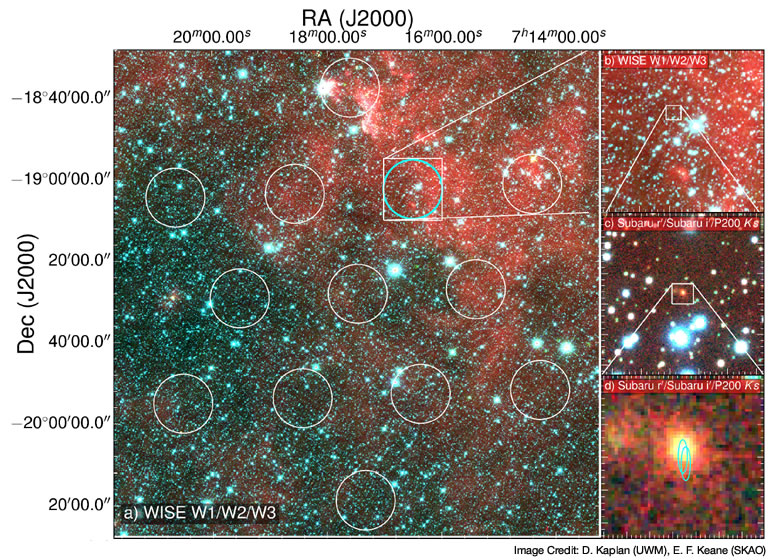New Fast Radio Burst Discovery Finds ‘Missing Matter’ in the Universe
| Science
SKA Headquarters, Jodrell Bank Observatory, UK announced that an international team of scientists using a combination of radio and optical telescopes including the Subaru Telescope has for the first time managed to identify the location of a fast radio burst, allowing them to confirm the current cosmological model of the distribution of matter in the Universe.
On April 18, 2015, a fast radio burst (FRB) was detected by the 64-m Parkes radio telescope in Australia. FRBs are mysterious bright radio flashes generally lasting only a few milliseconds. Their origin is still unknown due to the difficulty in its detection. Subsequent observations with a radio interferometer gave them the location of the signal with much greater accuracy.
The team then used the Subaru Telescope in Hawaii to look at where the signal came from, and identified an elliptical galaxy some 6 billion light years away. This is the first time the host galaxy of an FRB is identified, which in turn, enabled the astronomers to determine the distance.
In the current model, the ‘ordinary’ matter makes up only 5% in the Universe, the matter that makes everything we see such as the stars. However, through observations of stars, galaxies and hydrogen, astronomers have only been able to account for about half of the ordinary matter, the rest could not be seen directly and so has been referred to as ‘missing’. With this discovery, the team have found the missing matter. It is the first time a fast radio burst has been used to conduct a cosmological measurement.
The team hopes to expand the sample size that will enable precision measurements of cosmological parameters such as the distribution of matter in the Universe, and provide a refined understanding of dark energy.
